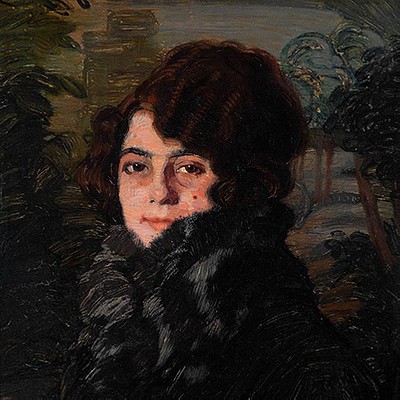FRANS WILHELM ODELMARK (Sweden, 1849-1937). "Scene from the bazaar in Cairo". Oil on canvas.
Lot 60
About Seller
Setdart Auction House
Carrer Aragó 346
Barcelona
Spain
Setdart Subastas was born in 2004 and is currently the first online art auction in Spain with solidity, prestige and reliability guaranteed by our more than 60,000 users. Setdart has a young, dynamic and enterprising team ready to successfully manage the purchase and sale of art works through custom...Read more
Estimate:
EUR€3,000 - EUR€3,500
$3,225.81 - $3,763.44
Absentee vs Live bid
Two ways to bid:
- Leave a max absentee bid and the platform will bid on your behalf up to your maximum bid during the live auction.
- Bid live during the auction and your bids will be submitted real-time to the auctioneer.
Bid Increments
| Price | Bid Increment |
|---|---|
| EUR€0 | EUR€10 |
| EUR€200 | EUR€25 |
| EUR€500 | EUR€50 |
| EUR€1,000 | EUR€100 |
| EUR€3,000 | EUR€200 |
| EUR€5,000 | EUR€500 |
| EUR€10,000 | EUR€1,000 |
| EUR€20,000 | EUR€2,000 |
| EUR€50,000 | EUR€5,000 |
About Auction
By Setdart Auction House
Jul 15, 2021
Set Reminder
2021-07-15 08:00:00
2021-07-15 08:00:00
America/New_York
Bidsquare
Bidsquare : 19th & 20th CENTURY PAINTINGS & ORIENTALISM
https://www.bidsquare.com/auctions/setdart-auction-house/19th-20th-century-paintings-orientalism-7212
Setdart Auction House sofia@setdart.com
Setdart Auction House sofia@setdart.com
- Lot Description
FRANS WILHELM ODELMARK (Sweden, 1849-1937). "Scene from the bazaar in Cairo". Oil on canvas. It presents slight restorations. Signed and located in the lower area. Size: 79 x 53 cm; 92 x 66 cm (frame). In this urban scene the artist offers us an image that is conceived as a historical document. With it the author tries to visually transmit to us a culture, its customs, its clothing and its architecture, the space in which they live. Through a frontal perspective, which is closed both on the side and in the last plane, due to the buildings. The artist shows a scene that could well be interpreted as part of the costumbrista current. However, the presence of the camel as a means of transportation, added to the characters, and the aesthetics of the architecture that dominates the scene, move us as spectators to a distant world. Without avoiding that the reading of the work is generated from a western point of view. However, it is worth mentioning that this work is part of an orientalist school of advanced character, which leaves behind the beautiful odalisques, harems and slave markets to paint nothing but what they see, the real Orient in all its daily dimension. Along with the change of vision comes a technical and formal change; since it is no longer a question of recreating an imagined world in all its details, the brushstroke acquires impressionistic fluency, and the artists focus not so much on the depiction of types and customs as on the faithful reflection of the atmosphere of the place, of the very identity of the North African populations. Frans Wilhelm Odelmark began his artistic training at the Royal Academy of Arts in Stockholm and later in Düsseldorf and Munich. His work is characterized by portraying scenes of everyday life and picturesque architectural subjects, mainly from Europe and the Orient. Scenes that he was able to recreate due to his stay in Egypt for a prolonged period, which served as a source of inspiration for many of the artist's paintings, where through different formats, such as watercolor, pastel and oil, he captured the luminosity of Cairo.
- Shipping Info
-
In-house shipping available. Please inquire at admin@setdart.com.
-
- Buyer's Premium



 EUR
EUR CAD
CAD AUD
AUD GBP
GBP MXN
MXN HKD
HKD CNY
CNY MYR
MYR SEK
SEK SGD
SGD CHF
CHF THB
THB















